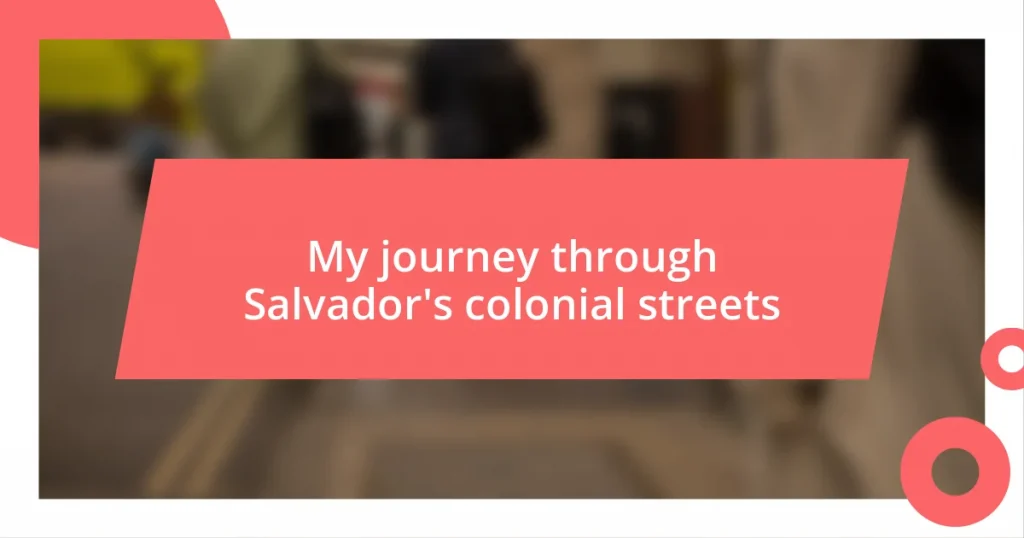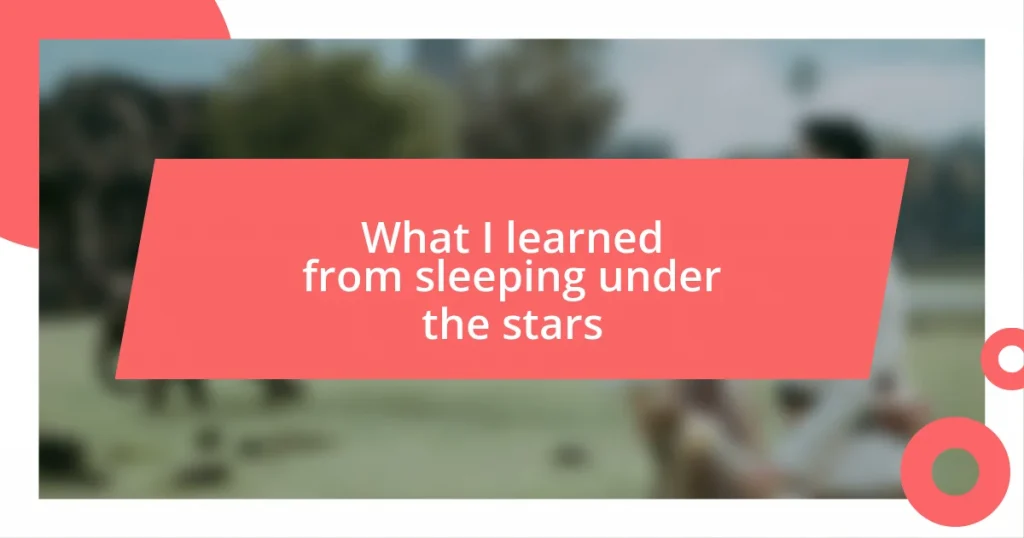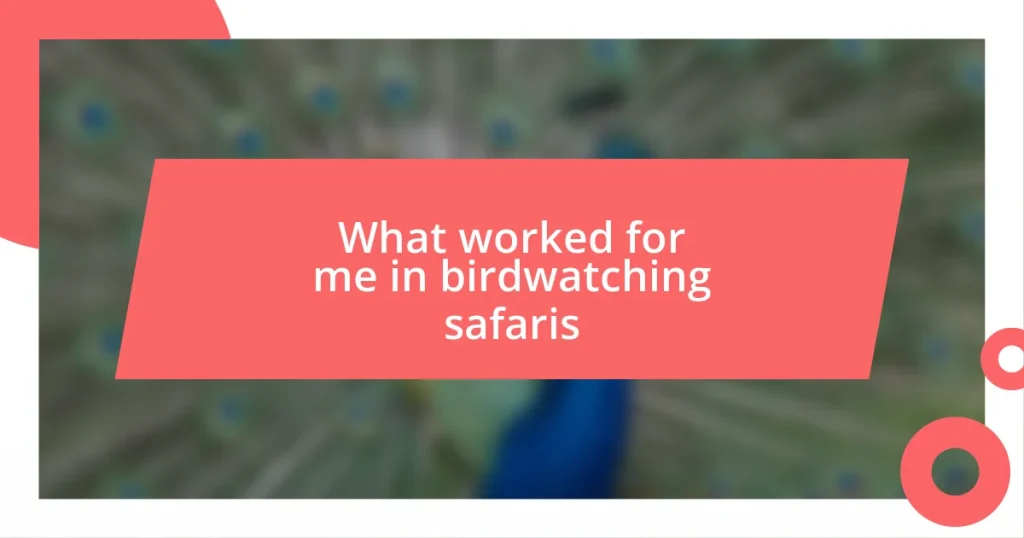Key takeaways:
- Salvador’s colonial history reflects a rich blend of exploration, trade, and cultural exchange, marked by its status as Brazil’s first capital and a hub for the sugar trade.
- Key landmarks like Praça da Sé, Elevador Lacerda, and Igreja de São Francisco showcase the city’s baroque architecture and historical significance.
- Visiting during Brazilian summer provides a vibrant atmosphere, especially during Carnival, while shoulder seasons and the rainy period offer quieter, picturesque experiences of Salvador’s charm.
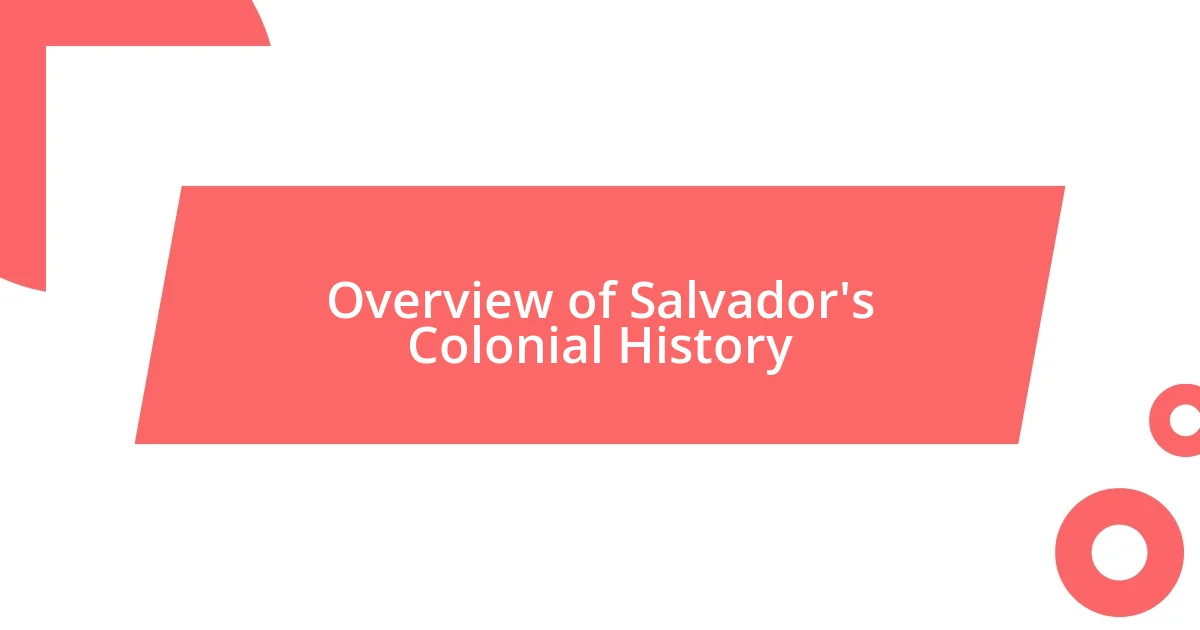
Overview of Salvador’s Colonial History
Salvador’s colonial history is a vivid tapestry woven with tales of exploration, trade, and cultural exchange. As the first capital of Brazil, Salvador was central to the Portuguese colonization efforts in the 16th century. Walking through its cobblestone streets, I often find myself pondering how these vibrant avenues once echoed with the footsteps of explorers and indigenous peoples navigating their intertwined fates.
The architecture of Salvador’s colonial period is undeniably captivating, with intricate baroque churches and pastel-colored buildings. Each structure has a story, and I can’t help but feel a sense of reverence as I stand before the Igreja de São Francisco, its lavish interiors shimmering with gold leaf. Have you ever looked at a piece of architecture and felt transported back in time? I certainly do, imagining the devotion and craftsmanship that went into creating such a magnificent edifice.
During its heyday, Salvador thrived as a major center for the sugar trade, which shaped its economic and social landscape. The immense wealth generated by sugarcane plantations fueled the rise of a diverse and complex society. While exploring the Pelourinho district, I remember being struck by the mix of cultures, from African influences to Portuguese traditions, all coexisting amid a backdrop of colonial history. Isn’t it fascinating how the struggles and triumphs of the past still echo in the heart of the city today?

Key Colonial Landmarks to Explore
One of the must-visit landmarks is the Praça da Sé. As I stood in this historical square, the energy around me was palpable. It’s the site of the Cathedral of Salvador, where baroque architecture meets the vibrancy of local life. I could almost hear the whispers of history, and recalling the many ceremonies held here through centuries made me appreciate its significance even more.
Another landmark worth exploring is the Elevador Lacerda, a breathtaking elevator that connects the lower city to the upper city. Riding it felt like taking a trip back in time and witnessing the city’s evolution firsthand. The stunning views of the Baía de Todos os Santos left me in awe, making me realize how this engineering marvel not only serves a practical purpose but stands as a symbol of Salvador’s rich past.
Lastly, I was profoundly moved when I visited the Igreja de São Francisco. The interior, lavishly adorned with gold leaf, tells tales of devotion and artistry. I remember feeling a chill run down my spine as I slowly walked through, contemplating the lives of those who once worshiped here. The intricate details and the sheer beauty of the church left an indelible mark on my heart, making it a highlight of my journey through Salvador’s colonial streets.
| Landmark | Description |
|---|---|
| Praça da Sé | Historical square featuring the impressive Cathedral of Salvador. |
| Elevador Lacerda | A breathtaking elevator connecting the lower and upper cities. |
| Igreja de São Francisco | A stunning baroque church known for its extravagant gold leaf interiors. |
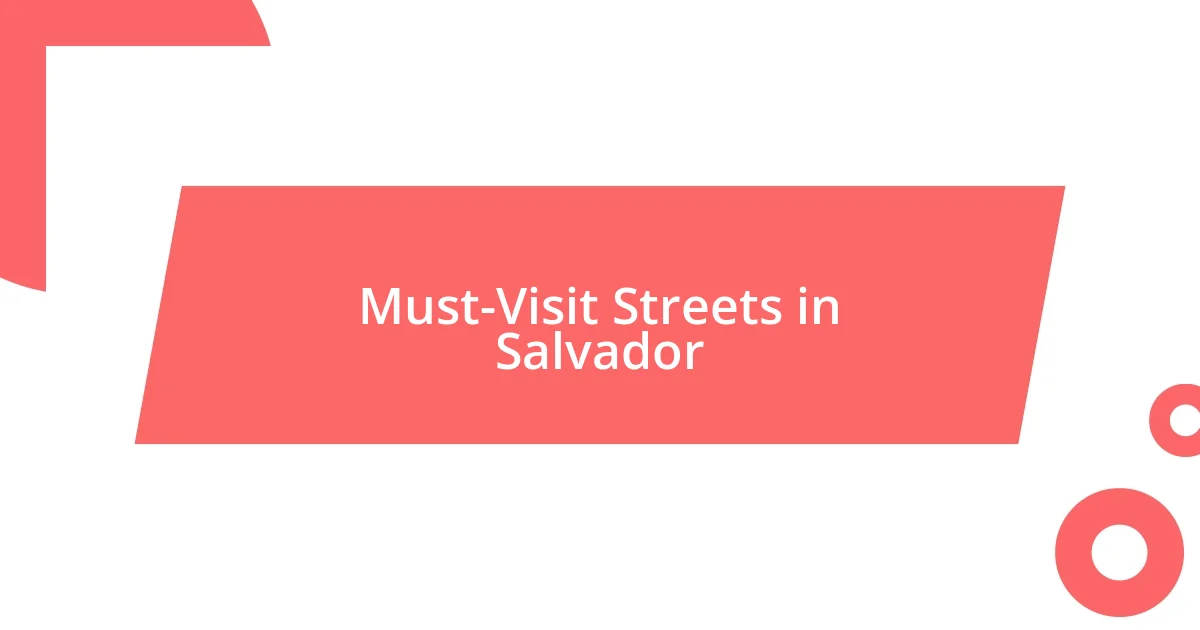
Must-Visit Streets in Salvador
I have vividly explored Salvador’s streets, and a few stand out as absolutely vital to the experience. One of these is Rua da B Andrade, a charming street lined with colorful colonial buildings that spark joy with every step I take. The lively atmosphere is infectious, drawing local artists and musicians who make every corner feel alive. I remember pausing to watch a street performer dance, captivated not just by the rhythm but by the soul of the city that pulsated through their movements.
Another essential gem is Largo do Pelourinho, where I often find myself caught up in the captivating fusion of culture and history. The vibrant street market stalls bursting with handicrafts and local delicacies make for a feast for the senses. One afternoon, I tried a coconut-infused moqueca, the flavors bursting in my mouth while the cheerful chatter of visitors and locals wrapped around me like a warm embrace. It’s moments like these that remind me why Salvador’s streets are a tapestry of experiences waiting to be uncovered.
- Rua da B Andrade: A picturesque street filled with colorful colonial buildings, home to local artists and performers.
- Largo do Pelourinho: A vibrant square packed with markets and eateries, perfectly showcasing Salvador’s rich culture and delightful cuisine.
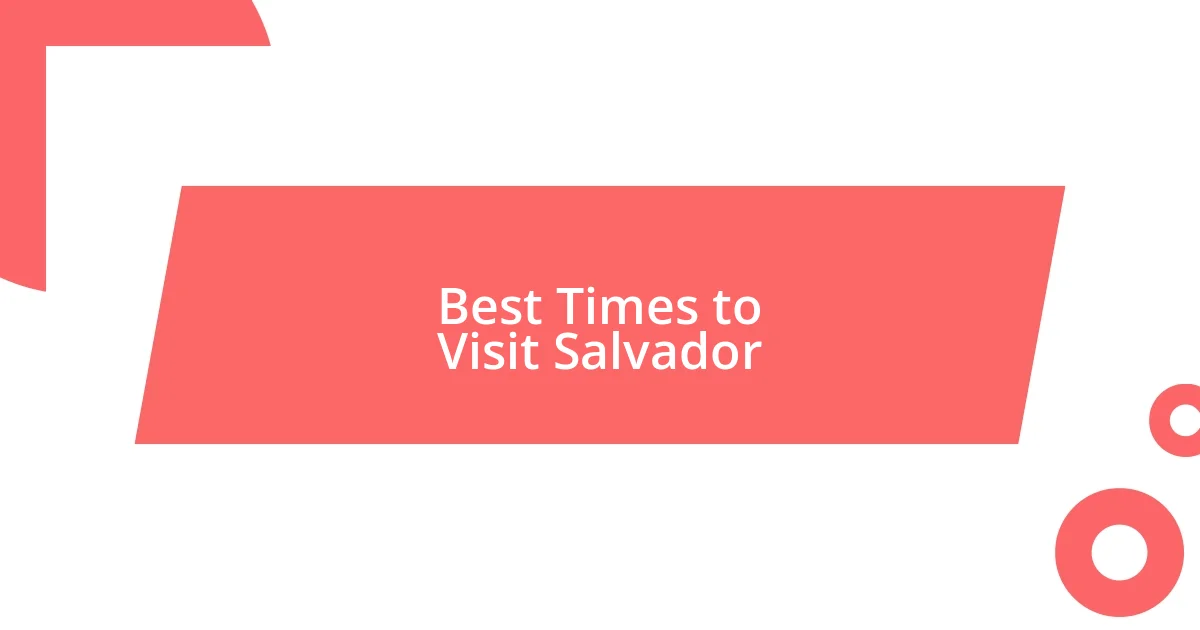
Best Times to Visit Salvador
When deciding on the best time to visit Salvador, I recommend considering the Brazilian summer, which typically runs from December to March. This is when the city truly comes alive. The weather is warm and sunny, perfect for enjoying outdoor activities. More importantly, the summer season coincides with Carnival, a vibrant festival that transforms the streets into a carnival of emotions, music, and dance. Can you imagine being part of that exhilarating atmosphere?
If you prefer a quieter experience, consider visiting during the shoulder seasons of late spring or early fall. I remember wandering through Pelourinho with a sense of calm, the streets less crowded yet equally enchanting. The pleasant weather during these times allows for leisurely strolls through historic sites without the overwhelming hustle and bustle. Plus, the local festivals during these months offer unique insights into Salvador’s rich culture without the chaos of peak tourism.
Finally, keep in mind the rainy season, which runs from April to July. While frequent rains can be a downside, I discovered that the city has its own charm during this time. The vibrant colors of colonial buildings seem to pop even more under the soft rain, and the streets are typically less crowded. This could be the perfect backdrop for capturing unique photographs and creating lasting memories. Have you ever considered how a little rain can turn an ordinary scene into something extraordinary?










